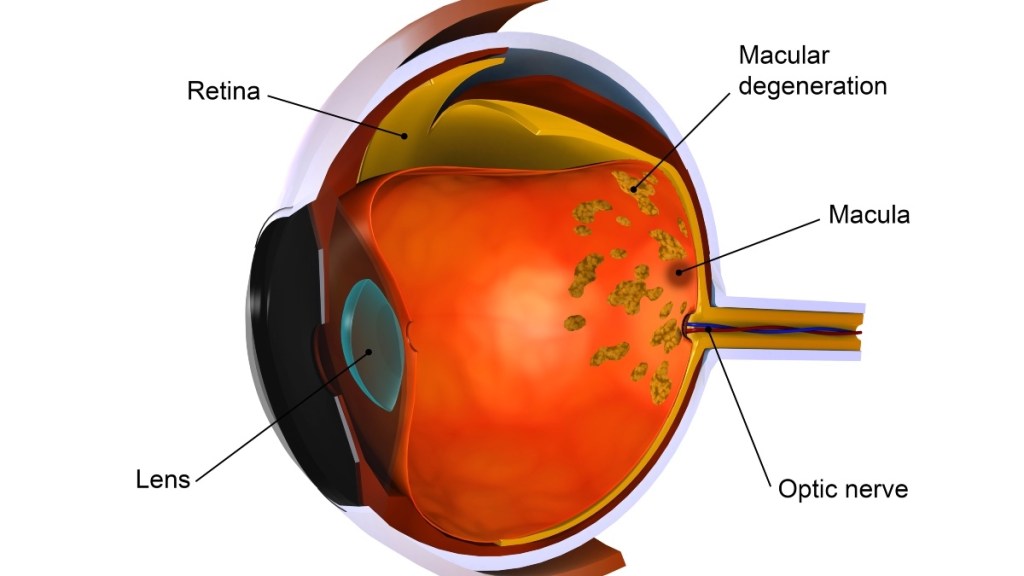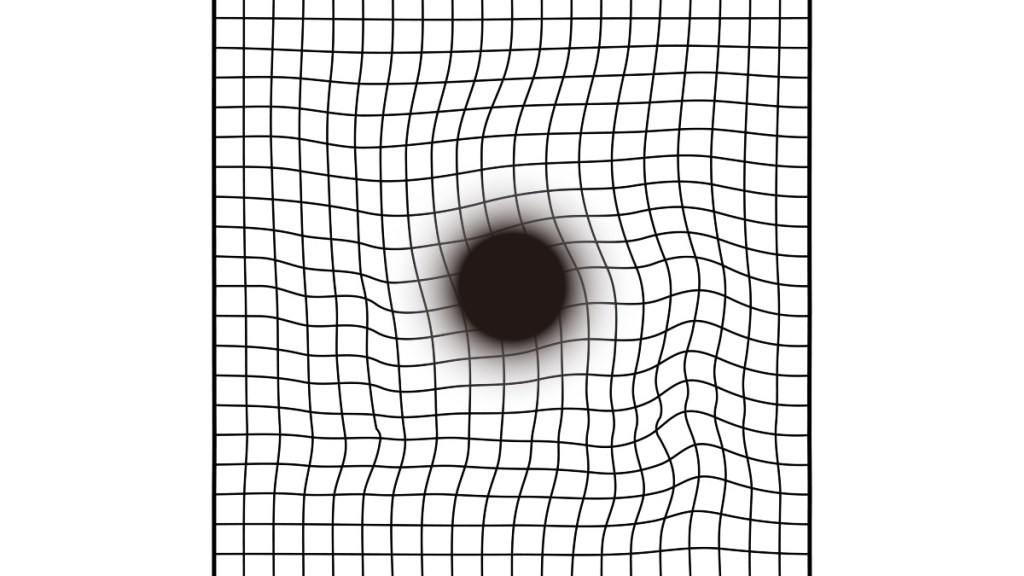Blurry Vision? Top Doc Reveals When It’s Cause for Concern — And How To Keep Your Sight Sharp
Sneaking spinach into your daily diet helps reduce your risk of macular degeneration up to 46%

As we age, vision changes can make it difficult to do everything from read small print on restaurant menus to drive in dim light. Bothersome as they may be, these changes are typically par for the course as we get older and can often be corrected with a pair of reading glasses or anti-glare lenses. But sometimes, vision changes can indicate a more serious condition: age-related macular degeneration (AMD). Here, learn what a top doctor what are the early warning signs of macular degeneration, plus the best advice for keeping your sight sharp for years to come.
What is age-related macular degeneration?
Age-related macular degeneration is an eye disease that effects the macula, a part of the retina that controls sharp, forward vision. Aging can cause damage to the macula, blurring your central vision. In fact, AMD is the leading cause of severe vision loss for adults over the age of 50, affecting 11 million people in the United States.
“In the moderate and severe forms of the disease, a person has trouble reading, writing, recognizing faces or driving,” explains Ron Adelman, MD, director of the Retina Center, Yale School of Medicine. “That impacts their independence, social life and quality of life.”
The two types of age-related macular degeneration
There are two types of AMD: dry and wet. Dry AMD, or atrophic AMD, is the most common and occurs when the light-sensitive cells in the macula slowly break down with age. Dry AMD usually progresses slowly over several years in three stages: early, intermediate and late AMD. Having late AMD in one eye puts you at higher risk of developing the condition in the other eye. Over time, about 10 to 15% of people with AMD will progress from dry AMD to the more severe wet AMD.
With wet AMD, also known as advanced neovascular AMD, abnormal blood vessels grow in the back of the eye and damage the macula. “The abnormal blood vessels leak and bleed,” explains Dr. Adelman. “And when they leak and bleed, they damage photoreceptors the cells that process central vision.”

What are the early warning signs of macular degeneration?
In the early stages of macular degeneration, there are no warning signs. But once the condition moves into the intermediate phase, there are a few early warning signs of macular degeneration you can look out for.
1. Blurry central vision
One of the most common early warning signs of macular degeneration is mild blurriness in central vision, as well as trouble seeing in low lighting. But it’s important to note that blurry vision doesn’t always mean AMD.
“Not every case of blurry vision is macular degeneration,” Dr. Adelman says. “For a lot of people, as we age, we need glasses or people get cataracts, which means that the lens of the eye gets cloudy. But while not every case of blurry vision in a senior person is macular degeneration, the disease is the most common cause of legal blindness in the United States.”
Dr. Adelman says one way to differentiate between AMD and other types of blurred vision is the severity and scope of the blurring. “As people get older, almost everybody will need reading glasses,” he says. “So the near vision becomes blurry, but the distance is fine. In macular degeneration, both near and distance vision are impacted.”
2. Seeing wavy lines
In late AMD (dry or wet), symptoms include straight lines (such as the yellow lines on the road) appearing wavy or crooked. This is often accompanied by a blurry spot near the center of vision. Over time, this spot may get larger or you may notice “blank spots” in your vision.

3. Colors appearing dull
In addition to blurriness and squiggly lines, you may also notice that colors seem less bright, Dr. Adleman says. What’s more, it can become difficult to see in dim light. (Click through to learn how keeping your sight sharp helps reverse your biological age.)
When to see a doctor about macular degeneration
Dr. Adelman says that the moment you experience any potential early warning signs of macular degeneration, it’s important to see your eye doctor to either confirm or rule out the condition as the cause.
“When the vision becomes blurry, people need to get checked to see if it’s cataracts, macular degeneration or simply the need for glasses,” he says. AMD is usually diagnosed via a comprehensive dilated exam or using a test called optical coherence tomography, which uses a special machine to take pictures of the inside of the eye.
Risk factors for macular degeneration
While anyone can develop AMD, Dr. Adelman says there are a few risk factors that can make it more likely:
- Being age 50 or older
- Having lighter-colored skin and eyes, particularly if your ancestors hail from Northern Europe
- Family history of the condition
- Smoking
- High blood pressure or hypertension
- Eating a diet high in saturated fat
Natural ways to ward off macular generation
Here’s the good news: You can help prevent or slow the development of AMD with a few simple tricks.
1. Follow a Mediterranean diet
Sure, you know the Mediterranean diet — which focuses on plant-based foods and healthy fats — is good for your heart. But it turns out it’s also a smart way to safeguard your sight. A study in Nutrients found that following a Mediterranean-style diet reduces the risk of developing AMD. And if you already have the condition, it lowers the risk of progression to its more advanced stages. To get the benefits, Dawn Jackson Blatner, RD, suggests following a Mediterranean diet that’s especially rich in fruits and vegetables. She suggests eating 2½ cups of each daily.
“It’s important to eat a variety of fruits and vegetables because they all have different nutrients,” she says. “So the first step is eating enough fresh produce in general. Then the second step is eating a variety of colors — red, orange, yellow, green, blue and so on.” (See how colorful beetroot and watercress protect your vision, too.)

Jackson Blatner says that in addition to fruits and veggies, fish plays an important role both in Mediterranean diets and in preventing AMD. “A Mediterranean diet really focuses on fish much more than the typical American diet, so you want to shoot for at least 15 oz. per week,” she says.
“Healthy diets with at least two servings of fish per week have a protective effect for aging changes in the macula,” Dr. Adelman says. Polyunsaturated fatty acids, such as omega-3s and omega-6s, found in oily fish such as tuna, salmon, mackerel and sardines reduce inflammation and oxidative stress in the eye, which can accelerate the development of AMD. (The benefits of the Mediterranean diet don’t stop there. Learn how following the Mediterranean diet can help you lose weight.)
2. Savor a spinach smoothie
While you’re upping your vegetable intake, be sure to work more leafy greens into your diet, too. Jackson Blatner says vegetables such as kale, spinach, arugula, parsley and romaine lettuce pack two nutrients critical to eye health — lutein and zeaxanthin. “In terms of pigments being most powerful to protect your eyes, lutein and zeaxanthin are the cream of the crop,” she says. “They are best in class.”
A smart way to get a daily dose of leafy greens: Toss a handful of baby spinach in a fruit smoothie. Research in the Journal of the Academy of Nutrition and Dietetics found that people who ate the most leafy greens were 35% less likely to develop AMD than those who rarely ate them. Nitrates in leafy vegetables such as spinach increase nourishing blood flow to the eyes. What’s more, University of Wisconsin researchers found that boosting levels of zeaxanthin slashes AMD risk by 46%, while a study in JAMA suggests that lutein helps lower AMD risk up to 43%. (See how to clean spinach before eating it and how to keep spinach fresh longer.)

3. Supplement with AREDS 2
Even if you have early-stage AMD, Dr. Adelman says you can prevent it from progressing further by taking what’s known as an AREDS 2 supplement. The specific combination of nutrients in this supplement — vitamins C and E, lutein, copper, zinc and zeaxanthin — can “reduce the risk of progression in patients who have a moderate form of the disease,” say Dr. Adelman. (Learn more about how lutein and zeaxanthin can help with night vision, plus how supplementing with astaxanthin safeguards your sight.)
Including these nutrients in your diet is another smart step. You can find them in foods such as eggs (especially the yolk), kale, broccoli, carrots and spinach, Jackson Blatner adds.
A new treatment for age-related macular degeneration
If you already have AMD and need additional support to keep your sight sharp, a new type of medication can help. This year, the FDA approved two medications to treat the late stage of dry AMD known as geographic atrophy. The injectable medications — Syfovre (pegcetacoplan) and Izervay (avacincaptad pegol) — stop the growth of atrophic lesions. These lesions begin in the outer retina and expand to cover the macula, leading to irreversible vision loss over time.
Both Syfovre and Izervay are injected by a doctor into the vitreous, a jelly-like fluid near the retina. Doses are administered monthly or every other month, and the medications are typically covered by insurance and Medicare. Dr. Adelman says developments such as these medications make AMD easier to treat and manage.
“When people hear macular degeneration, they always remember the severe cases where somebody was disabled,” Dr. Adelman says. “But for every person with severe disease, there are a number of other people who don’t have it progress that far. There are effective ways to manage it these days, and as time passes, there will be even better ways.”
For more ways to keep your vision sharp:
Treating *This* Common, Sneaky Cause of Blurriness Can Improve Your Vision in 7 Days
Marigold Extract is ‘Supreme’ for Improved Eyesight, Says Top Eye Doc — How to Reap the Benefits
These Antioxidant-Rich Berries Can Ward Off Age-Related Vision Loss
This content is not a substitute for professional medical advice or diagnosis. Always consult your physician before pursuing any treatment plan.
















